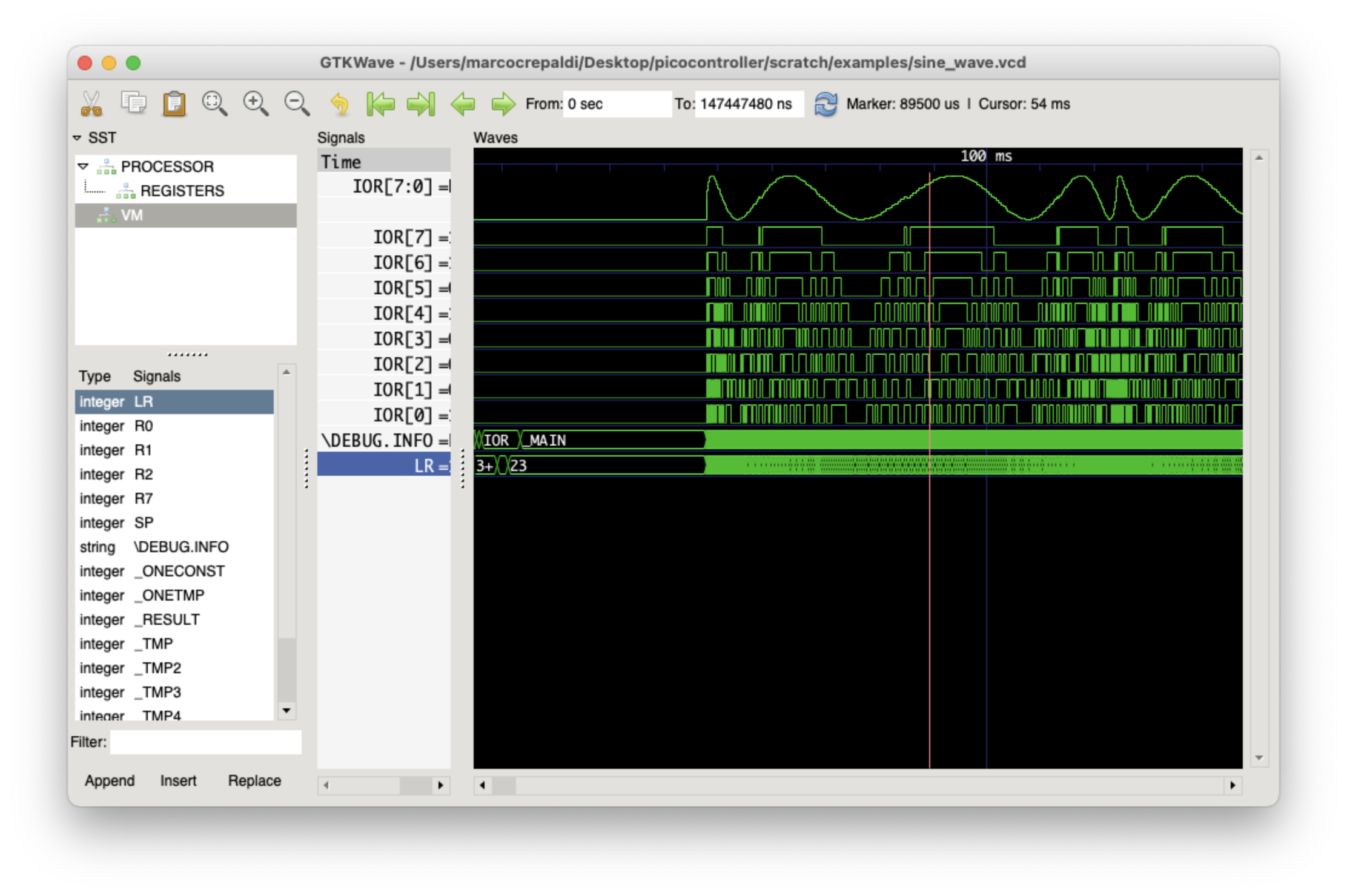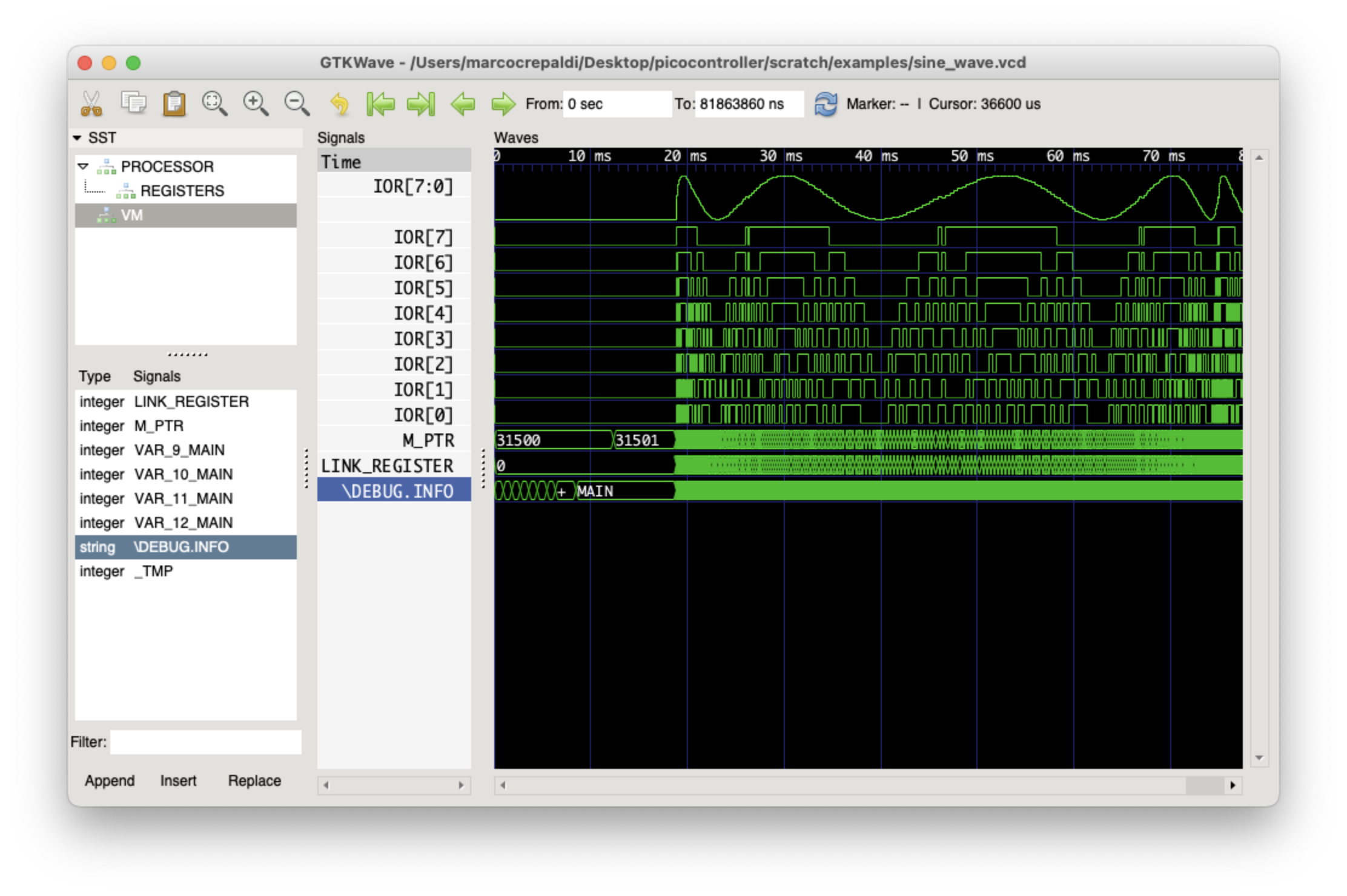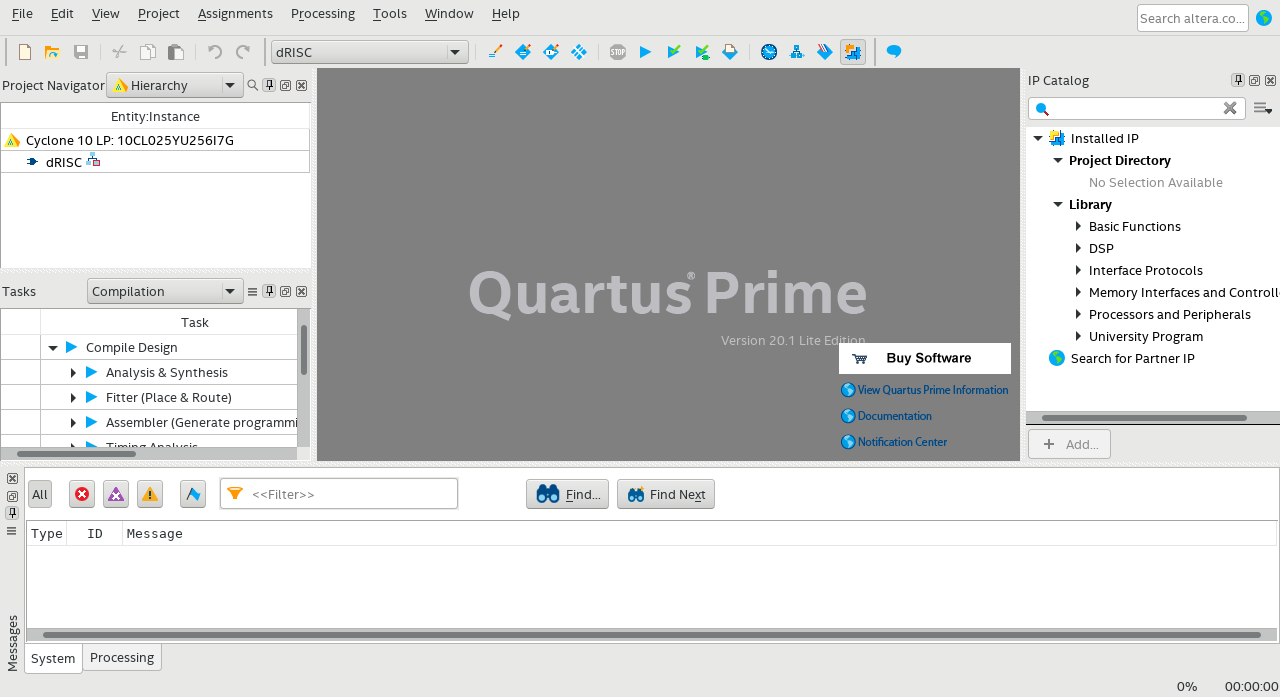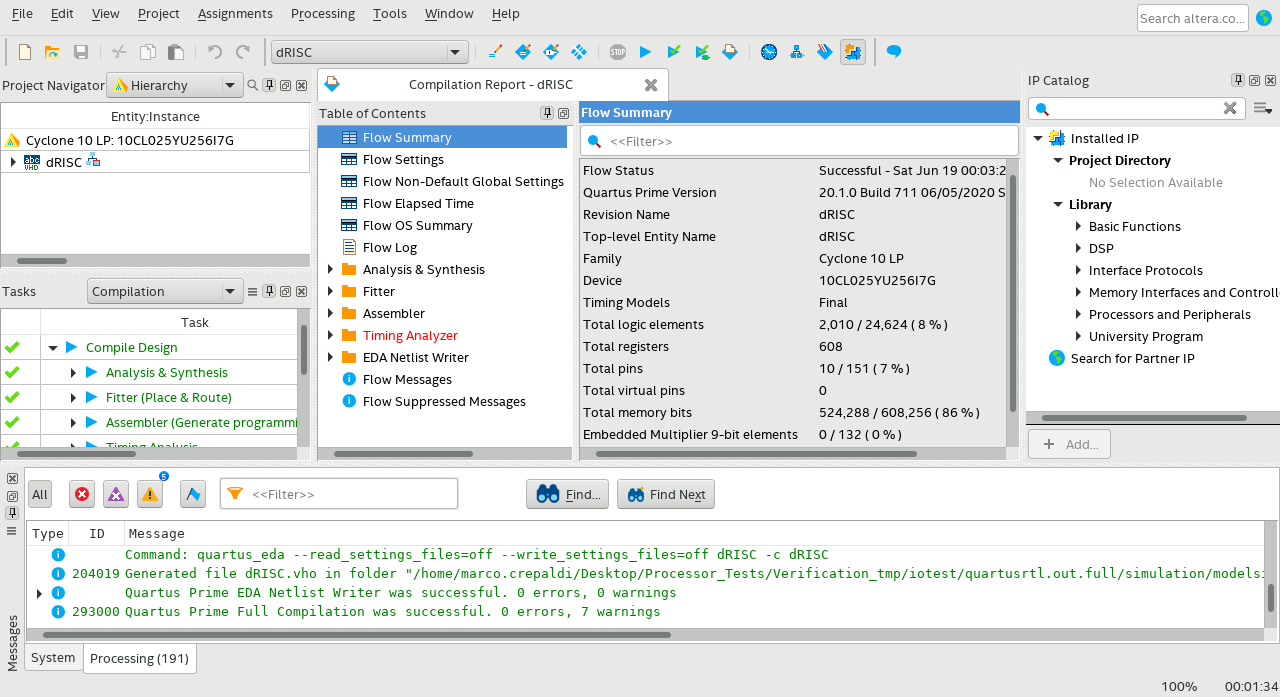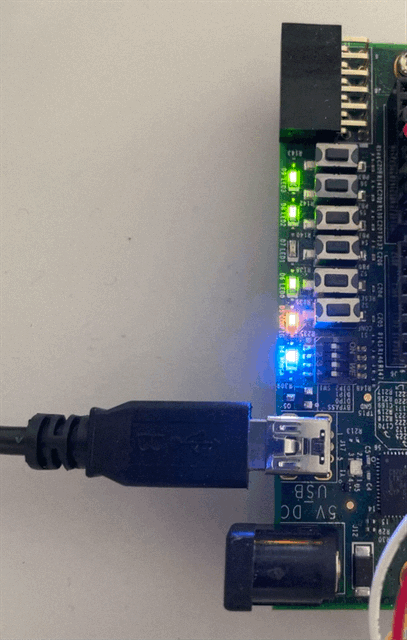Open source implementation of a multi-One Instruction Set Processor (mOISC) or dynamic Reduced Instruction Set Computer (dRISC) for microcontroller applications.
This repository comprises a basic monolithic compilation toolchain that compiles C source code to mOISC assembly and to binary files using the clang front-end LLVM-IR output. Moreover, it translates clang and llc generated assembly of commercial ISA (ARM, MIPS, RISC-V and x86) to the
mOISC assembler and binary files and provides an RTL proof-of-concept microarchitecture written in VHDL. mOISC can be used for educational purposes or other research activities, for instance for devising other minimalistic computer architectures.
Copyright (C) 2020-2021 Marco Crepaldi, Istituto Italiano di Tecnologia (www.iit.it), Electronic Design Laboratory (https://edl.iit.it).
The software is experimental and work in progress. We have not implemented all LLVM-IR instructions, nor all commercial ISA instructions and the compiler works for simple programs based on integer variables, vectors and pointers. The mOISC processor (picocontroller) is conceived for low complexity applications. This software is a starting point to devise more complex projects/architectures. This code is the output of an our internal research project involving OISC during the first COVID pandemic lockdown.
The files contained in this repository are licensed under the BSD-3-Clause license, except the following:
-
the files in /lib/autogen named dRISC.qsf, dRISC.qpf, dRISC_PLL.cmp, dRISC_PLL.vhd, iobuf.cmp, iobuf.vhd, iobuf.qip, memory.cmp, memory.vhd, dRISC_chain.cdf, memory.qip, memory_inst.vhd, dRISC.qsf are generated by the Intel Quartus software, and are licensed under the terms and conditions described in the Intel Program License Subscription Agreement, the Intel Quartus Prime License Agreement, the Intel FPGA IP License Agreement, or other applicable license agreement, including, without limitation, that your use is for the sole purpose of programming logic devices manufactured by Intel and sold by Intel or its authorized distributors.
More information at: https://fpgasoftware.intel.com/eula
-
the file dRISC.qsf contains additional commented lines written by Marco Crepaldi, Istituto Italiano di Tecnologia.
-
all the .c and .h files and the file pysensor.py in the subfolder examples/ are subject to Open Source Licensing GPL V3.
-
examples/RH_RF95.h, copyright (C) 2014 Mike McCauley (mikem@airspayce.com), with code commented on line 15 and from line 505 until the end of file by Marco Crepaldi, Istituto Italiano di Tecnologia.
For all the other files, we report the BSD-3-Clause license:
Copyright 2020-2021 Marco Crepaldi, Istituto Italiano di Tecnologia, Via Morego 30, 16163, Genova, Italy.
Redistribution and use in source and binary forms, with or without modification, are permitted provided that the following conditions are met:
-
Redistributions of source code must retain the above copyright notice, this list of conditions and the following disclaimer.
-
Redistributions in binary form must reproduce the above copyright notice, this list of conditions and the following disclaimer in the documentation and/or other materials provided with the distribution.
-
Neither the name of the copyright holder nor the names of its contributors may be used to endorse or promote products derived from this software without specific prior written permission.
THIS SOFTWARE IS PROVIDED BY THE COPYRIGHT HOLDERS AND CONTRIBUTORS "AS IS" AND ANY EXPRESS OR IMPLIED WARRANTIES, INCLUDING, BUT NOT LIMITED TO, THE IMPLIED WARRANTIES OF MERCHANTABILITY AND FITNESS FOR A PARTICULAR PURPOSE ARE DISCLAIMED. IN NO EVENT SHALL THE COPYRIGHT HOLDER OR CONTRIBUTORS BE LIABLE FOR ANY DIRECT, INDIRECT, INCIDENTAL, SPECIAL, EXEMPLARY, OR CONSEQUENTIAL DAMAGES (INCLUDING, BUT NOT LIMITED TO, PROCUREMENT OF SUBSTITUTE GOODS OR SERVICES; LOSS OF USE, DATA, OR PROFITS; OR BUSINESS INTERRUPTION) HOWEVER CAUSED AND ON ANY THEORY OF LIABILITY, WHETHER IN CONTRACT, STRICT LIABILITY, OR TORT (INCLUDING NEGLIGENCE OR OTHERWISE) ARISING IN ANY WAY OUT OF THE USE OF THIS SOFTWARE, EVEN IF ADVISED OF THE POSSIBILITY OF SUCH DAMAGE.
A full machine description (registers included) is available in the first commented lines of the file m.py here.
All this work, the Instruction Set Architecture (ISA), the CPU architecture, the compilation and simulation toolchain with our experiments, are detailed in this paper.
The software has been tested under MacOS with the Darwin Kernel Version 20.5.0, and under CentOS Linux 7, with Kernel 3.10.0-1160.25.1.el7. We have tested compilation using LLVM 9.0 and 10.0. The RTL description has been verified using Quartus Prime Lite 19.1 and 20.1 in a realistic wireless telemetry application involving an SPI LoRA transceiver and an I2C temperature sensor.
To run the compilation and simulation toolchain you need to install the following software:
python3(download);python3modules listed here - you may runpip3 install -r ./requirements.txt. Note: the creation of a Python virtualenv is adviced.llvmandclangversion >= 9.0 (download);gtkwave(download).
For the FPGA synthesis you need to install the following software:
- Quartus Prime Lite (download);
Note: Using Quartus Prime is subject to the acceptance of the Intel End User License Agreement (EULA). See section License for further details.
Compilation from C to binary files is achieved using mc.py and m.py. For ease of use we have created two scritps that compile
the code by running both programs in sequence.
All the source files can be placed in the examples/ folder.
Code can be compiled in OISC mode and in CISC mode. We refer here to a sample code that generates a frequency modulated sine wave on the IOR port, sine_wave.c. The mOISC include file required for compilation is in lib/inc and its corresponding C code is automatically included by mc.py at compilation time.
To compile in CISC mode an example code sine_wave.c run the following command,
./compile-cisc examples/sine_wave ll
where ll stands for low-level and invokes compilation based on clang LLVM-IR output.
After compilation the following files will be generated: sine_wave.fasm (assembly in CISC mode), sine_wave.uasm (unlinked assembly in OISC mode),
sine_wave.sym (symbol file for simulation), sine_wave.bin (binary file for simulation), sine_wave.mif (MIF file for FPGA programming),
sine_wave.ll (LLVM-IR code generated by clang before low-level compilation).
To generate mOISC assembly from known ISA architectures assembly, run the following command,
./compile-cisc examples/sine_wave arm
where arm identifies the ISA, in this example ARM. Supported ISA are x86, riscv, arm, mipsel.
After compilation the following files will be generated: sine_wave.fasm (assembly in CISC mode), sine_wave.uasm (unlinked assembly in OISC mode),
sine_wave.sym (symbol file for simulation), sine_wave.bin (binary file for simulation), sine_wave.mif (MIF file for FPGA programming),
sine_wave.<arch> (<arch> assembly generated by clang and llc before translation).
To compile in OISC mode an example code sine_wave.c run the following command,
./compile examples/sine_wave ll
where ll stands for low-level and invokes compilation based on clang LLVM-IR output.
After compilation the following files will be generated: sine_wave.asm (assembly in OISC mode),
sine_wave.sym (symbol file for simulation), sine_wave.bin (binary file for simulation), sine_wave.mif (MIF file for FPGA programming),
sine_wave.ll (LLVM-IR code generated by clang before low-level compilation).
To generate mOISC assembly from known ISA architectures assembly, run the following command,
./compile examples/sine_wave arm
where arm identifies the ISA, in this example ARM. Supported ISA are x86, riscv, arm, mipsel.
After compilation the following files will be generated: sine_wave.asm (assembly in OISC mode),
sine_wave.sym (symbol file for simulation), sine_wave.bin (binary file for simulation), sine_wave.mif (MIF file for FPGA programming),
sine_wave.<ARCH> (<ARCH> assembly generated by clang and llc before translation).
To run graphical simulation (internally invoking gtkwave), run the following command,
./simulate examples/sine_wave
The tool will open the files sine_wave.bin and sine_wave.sym that are obtained based on the previously
run compilation.
Let the system simulate for a while, then press CTRL-C to stop the simulation execution and view the results (few seconds will be enough for sine_wave). The simulation engine will generate a VCD file that will be opened in the same examples/ subdirectory, and used as input for gtkwave. Once opened, add IOR to the currently displayed wave to see the effect of the code on the I/O output port. You can also add \DEBUG.INFO for information on the currently executed function.
Under Linux the gtkwave screen should look like this (code translated from ARM, OISC mode):
Under macOS, by zooming out the waveform and by activating the analog-view mode, the gtkwave screen should look like this for OISC mode translation from an ARM assembly (with LR added from VM signal list):
For the same code in CISC mode, assuming LLVM-IR output compilation, the gtkwave screen should look like this (with added LINK_REGISTER from signal list):
You can now zoom-in to see the data memory variables evolution during the execution of the program.
Note: by default simulate attaches some variables to be saved in the VCD file. You can modify the script to add the variables you want to show in the simulation.
The toolchain also provides automatic VHDL and Quartus project files generation for a Cyclone 10LP Evaluation Kit, with IOR port pin mapping configured by default as,
| FPGA Pin | dRISC Pin |
|---|---|
| PIN_B1 | IOR[0] |
| PIN_C2 | IOR[1] |
| PIN_F3 | IOR[2] |
| PIN_D1 | IOR[3] |
| PIN_G2 | IOR[4] |
| PIN_L14 | IOR[5] |
| PIN_G1 | IOR[6] |
| PIN_J2 | IOR[7] |
| PIN_D9 | RST |
The CLK pin is the default physical pin of the on-board 50MHz oscillator.
In all cases, pins can be configured using mautogen.py and by adding additional arguments to autogen. Run python3 mautogen.py -help for further information.
Note: the pin configuration exemplified in the mautogen.py command line help works for the example iotest.c. This file tests the correct operation of the minimalistic mOISC interrupt strategy.
To generate the processor VHDL code with preconfigured Quartus project files the toolchain utilizes mautogen.py. Run the following script:
./autogen examples/sine_wave
The script internally calls mautogen.py and generates a full Quartus project in a subfolder quartusrtl.out, including only the
needed instructions defined in the assembly code. Make sure the code is compiled in OISC mode. The generated processor
will be able to run both CISC and OISC mode code in any case, but autogen will process only OISC mode assembler files.
To generate a full featured processor (recommended) run:
./autogen examples/sine_wave -mkfull
This way, the tool will generate a full featured processor in a subfolder quartusrtl.out.full. In this case the OISC mode assembly is dummy but it is required for code generation.
For all descriptions, the synthesis tool is configured by default to optimize logic timing.
For both cases, the VHDL project will contain the MIF file for internal SRAM initialization including the compiled code.
To run other programs, it is just necessary to overwrite the file fpga.mif and re-generate the assembly file for the FPGA.
Assuming you have a Cyclone 10LP Evaluation Kit, let us imagine you want to run a sample program that repeatedly shows a count from 0 to 15 in a binary format on some
pins of the output port to see if the toolchain is working correctly. This demo is included in the file examples/iotest.c.
Make sure you have correctly installed Quartus Prime Lite and your USB Blaster drivers supplied by Intel. Without functioning drivers it is not possible to program the FPGA.
First, compile the program by running:
./compile examples/iotest ll
Then, generate the VHDL description with a new pin configuration (listed in the mautogen.py command line help):
./autogen examples/iotest -mkfull -pincfg PIN\_L14,PIN\_K15,PIN\_J14,PIN\_J13,PIN\_C11,PIN\_F14,PIN\_B1,PIN\_C2
The program will generate a full featured processor in a subfolder quartusrtl.out.full. Move this folder somewhere else if you want to keep
the generated RTL separated from the main development folder.
Open the Quartus Prime Lite software and open the project (File, Open Project... menu) included in the quartusrtl.out.full folder. You should see something similar to the following screenshot.
Compile the design (double click on Compile Design). After compilation you should arrive to the following status.
Note: synthesis depends on the phyisical I/O pin placement.
Connect the evaluation board to your computer and open the programmer (Tools, Programmer menu). Make sure
you first set up your hardware (Hardware Setup... button). Then click on Auto Detect. The system will detect the connected
boards and will ask to overwrite the existing configuration. Click on Yes. Add the generated programmer binary file in a subfolder output_files to the device and not to the additional memory in the same scan chain. You should see a device starting with 10CL025. You should be able to reproduce the following screenshot.
Make sure that Program/Configure is flagged and click on the Start button. You should have now programmed your device, and see the incremental blinking cycle (at different speeds) on the on-board green LED bank, similarly to what is shown in the following image.
Note: this animated GIF is only indicative of the behaviour, and you should be able to see a full binary count at different speeds on the green LED bank.
The mOISC toolchain is based on m.py, mc.py and mautogen.py, that are called in the scripts compile, compile-cisc, simulate and autogen.
All these programs refer to the subfolder /lib and all its files. Other compilation and simulation options are available.
For instance, run the command python3 m.py --help to print the options of m.py. The same applies for mc.py and mautogen.py.
This CPU, this software and this work are dedicated to Damiano.


